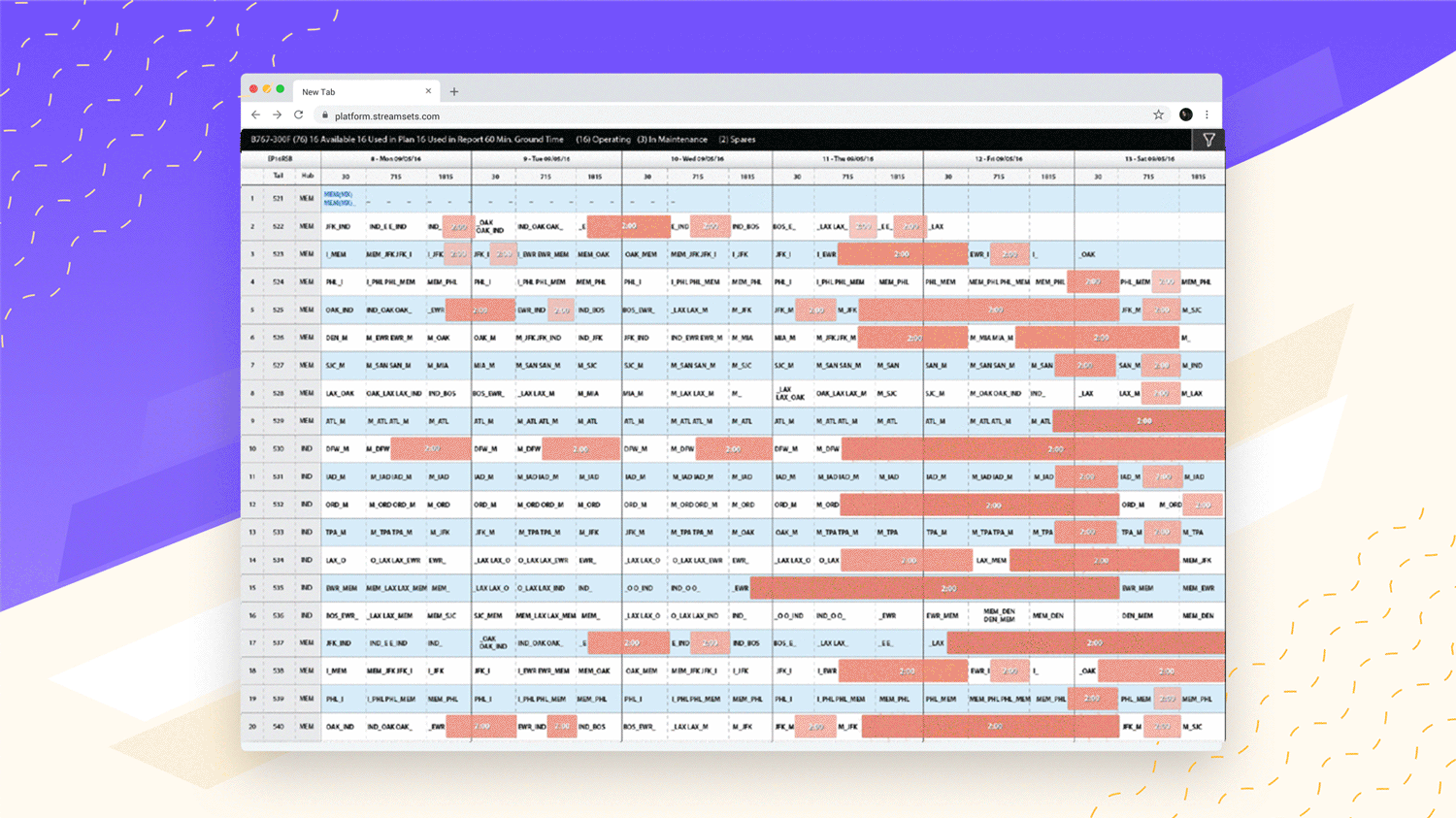FedEx
FedEx Express is the world's largest airline in terms of freight tons flown. Every year they spend over $9 billion moving 660 aircraft around the globe to 375+ locations. An expert team of planners aims to make this process as efficient as possible.
The system they were using at the center of this was over 30 years old and badly in need of improvement.
THE SITUATION
The planners at FedEx were looking to modernize their system for planning, tracking and maintaining all of their planes, trucks and packages worldwide. With an aging workforce and an antiquated system, some upgrades and streamlining needed to be done. Over a 45 year period a unique and surprisingly effective system of tribal knowledge and relatively primitive technology had kept FedEx Express running. The trouble with such a system is that once the tribe is gone all of that knowledge goes with them and bringing on a new member is a lengthy and painstaking initiation. There had to be a better way.
A glimpse into the old route input system
PROBLEMS WITH THE OLD SYSTEM
Nonintegrated / divided across multiple systems
Extensive onboarding process (2 years!)
Restricted collaboration / innovation potential
Difficulty in communicating ideas
Limited potential for data visualization
Disjointed workflow
RESEARCH
This phase was a challenge to say the least. Competitive analysis wasn’t a possibility and there were no user manuals or guides. The planners had been with the company for at least 20 years and in some cases close to 40 years so expertise syndrome was a real thing. I sat with planners for extended periods of time and took pages and pages of notes which I studied until that eventual moment of clarity when I could walk myself through the process at a fundamental level.
There were two separate processes being used by the planners. TRAC (international planners) and ROUTE (domestic planners).
WIREFRAMING
TAKING A NEW DIRECTION
This is when the information from the previous steps started to take spatial form. At this point I had a general idea as to what works as far as the interface so I created medium-high fidelity wireframes. Ideas were shown, users surveyed and designs critiqued which would then cycle back on themselves with various iterations. The initial concept from product management was to use a map based system (I’ll cover this in another post) for Route and TRAC flight planning purposes. The planners found this concept to be too cumbersome and inadequate for their needs and I agreed. After basic wireframes were created an agreed upon I created some interactive prototypes using Axure. These were tested with users and shown to the development team for collaboration and approval.
REFINING THE PROCESS
TRAC
The TRAC application is the one used for international planning. The main focus of international planning is time. Companies compete each year for time-slots at international airports so this takes priority over all other factors and the TRAC application was designed with this in mind. The planners found the vertical layout to be the most useful for visualizing the international flight schedules.
Animation showing time queries
ROUTE
The Route application is is designed for domestic flight planners who need to visualize time, volume and cube (package volume). They found the horizontal layout to work better for their needs.
Animation showing time and weight queries
FINISHED PRODUCT
The TRAC and ROUTE applications were initially a tough sell to the VP's that owned the project since they were outside of the original scope of the project.
One of the senior planners that had been at FedEx for 37 years ended up being the best advocate for the applications. Some of the planners were initially skeptical about the projects since they thought the application would end up taking their jobs. Eventually, after seeing the proposed upgrades they became excited about it.
I used and Axure prototype to present TRAC and ROUTE to a team of VP's at FedEx headquarters in Memphis, TN. They didn't understand what the planners did day to day but they liked the look and feel of it and knew how excited the planners were about the product. If the application can sufficiently solve the needs of the users, they will be your best advocates. In the end that's what's most important.
Next Project: Nuna





